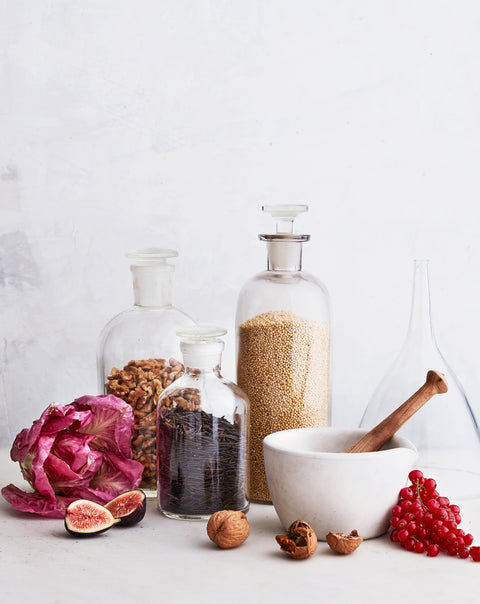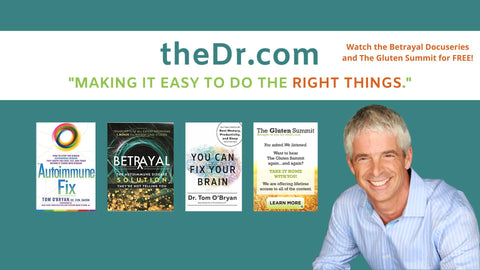In 2015, Jessica Largey was living her dream. As the chef de cuisine at the Michelin-starred restaurant Manresa, in Los Gatos, Calif., she won the prestigious James Beard Foundation Rising Star Chef Award. Yet she was anxious and depressed, and she had no idea why. “It’s not to say I didn’t have happiness in my life. I did,” she said. “But I had lost my sense of self.”
She tried to counteract her depression by throwing herself into work, but she quickly burned out. She left her position at Manresa and took time off to address her mental health. During that time, she worked with a holistic counselor who asked: “What are you eating?”
Guided by her counselor, Ms. Largey reexamined her dietary habits. She incorporated more whole grains, leafy greens, avocado, pickles and nuts into her diet. Turmeric and ginger became her staple spices. And she started to feel better. “I realized how my eating habits were actually affecting my emotional and mental state,” she said. Changing her diet didn’t eliminate her proclivity to depression, but she felt more able to deal with it. Emotionally equipped to step back into work, she recently opened her own restaurant, Simone, in Los Angeles.
Holistic approaches to mental as well as physical wellness often include nutrition. But the connection between food and mental health is now gaining traction in the medical community, too. Research in the field of nutritional psychiatry supports the scientific claim that what you eat and how you feel may be connected, especially when it comes to managing anxiety and depression.
According to the Anxiety and Depression Association of America, anxiety disorders are the most common form of mental illness in the U.S., affecting 18% of the population. Increasingly, mental health professionals are turning to integrative treatments to complement medication and traditional forms of therapy.
Next month, the World Journal of Psychiatry
will publish “Antidepressant Foods: An Evidence-based Nutrient Profiling System for Depression,” by Dr. Drew Ramsey, assistant clinical professor of psychiatry at Columbia University, and Dr. Laura LaChance of the Centre for Addiction and Mental Health in Toronto. It includes a nutrient-profile scale, which identifies the most nutrient-dense foods in relation to “the prevention and treatment of depressive disorders.” The paper names 12 nutrients key to managing depression and anxiety: folate (vitamin B9), iron, long-chain omega-3 fatty acids, magnesium, potassium, selenium, thiamine (vitamin B1), vitamin A, vitamin B6, vitamin B12, vitamin C and zinc. The foods richest in these include bivalves such as clams, mussels and oysters; leafy greens such as kale and spinach; wild salmon; organ meats; nuts; beans and seeds.
Nutritional psychiatrists assert that the “gut-brain” connection is the crux of managing anxiety and depression for many. “The balance of good and bad bacteria in the gut is essential for mental health,” said Dr. Uma Naidoo, psychiatry instructor at Harvard Medical School, culinary instructor at Cambridge School of Culinary Arts and director of nutritional and lifestyle psychiatry at Massachusetts General Hospital. “An imbalance causes inflammation and an imbalance of the important hormones and neurotransmitters—melatonin and serotonin—in the brain.”
Dr. Naidoo added that nutrition as a facet of therapy especially benefits patients to whom she prescribes medication. “Some of the medications cause weight gain and metabolism changes, so the responsible thing to do is address that,” she said. Dr. Naidoo, an integrative psychiatrist, emphasized that diet is just a part of her approach. “I don’t only ask what they’re eating. I ask how they’re sleeping, what they’re doing for exercise, what they’re doing to be mindful, along with traditional forms of therapy. In my clinical opinion, all of it helps. You can’t just say, Take 10 milligrams of Prozac. At the same time, you can’t just say, Eat 10 blueberries a day.”

Both Dr. Ramsey and Dr. Naidoo are collaborating with chefs, among them David Bouley, who focuses on the connection between good eating and good health at his Manhattan restaurant/cooking lab Bouley at Home. Mr. Bouley is working with both doctors, and nearly 50 others, leading a charge to educate medical professionals, nutritionists and home cooks, in the same way he promotes the connection between food and physical wellness. Mr. Bouley’s favorite anti-anxiety ingredient: bacteria.
Eating fermented foods, according to Drs. Ramsey and Naidoo, brings “good bacteria,” aka probiotics, to the digestive system that help ease anxiety in the brain. This month, Mr. Bouley is introducing a menu with fermented foods at Bouley at Home. The menu includes ice cream made with koji (a fermenting agent used frequently in Japan), fermented foie gras and fermented mushrooms. Next year, he will publish a book, “Living Pantry,” that will document his work with doctors. He will also debut a Living Pantry website geared toward implementing the research in home kitchens.
This last piece is key, said Victoria Albina, a functional- and integrative-medicine nurse practitioner, herbalist and life coach. She stresses the need for accessibility. “Medication and doctor visits are way more expensive than eating real food,” she said. “We as a nation need to start supporting community gardens and farm bills to make real food more available.” She shares recipes such as bone broth and sauerkraut, which promote good mental health, on her website, victoriaalbina.com. “These are easy, affordable recipes. Even eating frozen vegetables is a great, inexpensive way to get brain-healthy nutrients,” she said.
The doctors, chefs and counselors interviewed for this story were very careful to say that mental-health treatment must be individualized and there is no one-diet-fits-all therapy. The following recipes are merely a starting point. What the doctor ordered never tasted, or felt, so good.
Feel-Good Foods: Get Your Daily Dose

The following nutrient-dense foods come highly recommended for their anxiety- and depression-busting properties by nutritional-psychiatry specialists Dr. Uma Naidoo of Harvard Medical School and Dr. Drew Ramsey of Columbia University. Like others in their field, both doctors emphasize that it’s not an eat-three-almonds-and-call-me-in-the-morning situation. These foods are most effective as part of a larger program including regular exercise, a healthy sleep pattern, therapy and, where appropriate, medication.
- BEANS such as small red beans contain B vitamins, thiamine, iron and magnesium.
- FERMENTED FOODS such as kimchi and pickles contain probiotics.
- FRUITS such as berries and avocados (yes, that’s a fruit) contain potassium, B vitamins, vitamin C and magnesium.
- LEAFY GREENS such as spinach and kale contain magnesium, iron, zinc, vitamin A, vitamin E and B vitamins.
- LEGUMES such as lentils contain magnesium, B vitamins, zinc and iron.
- MEATS such as grass-fed beef and organ meats contain vitamin A, B vitamins, zinc and iron.
- NUTS AND DRUPES such as walnuts and cashews contain magnesium, omega-3 fats, zinc, B vitamins, vitamin E and selenium.
- OILS such as olive and fish contain omega-3 fats and vitamin E.
- SEAFOOD such as clams, wild salmon and anchovies contain zinc, iron, B vitamins, omega- 3 fats, magnesium and selenium.
- SEEDS such as sunflower and chia contain vitamin E, vitamin B1, magnesium, zinc and omega 3 fats.
- SPICES such as ginger and turmeric contain magnesium, vitamin C, vitamin B6, vitamin B1 and vitamin E.
- WHOLE GRAINS such as quinoa, farro and wild rice contain zinc, iron, vitamin B1, selenium and magnesium.

Feed Your Head: Foods That Target Depression and Anxiety
Pressure-Cooker Farro Grain Bowl With Cashew Cream, Summer Vegetables and Pickled Ginger Turmeric Dressing
Total Time: 1 hour 30 minutes
serves: 4

F. MARTIN RAMIN/THE WALL STREET JOURNAL, FOOD STYLING BY ELEANORE PARK
Ingredients
- 1 cup whole-grain farro, rinsed
- 2 cups water
- 1 tablespoon toasted sesame oil
- 1 tablespoon apple cider vinegar
- 1 tablespoon kosher salt
- 1 cup unsalted cashews (toasted or untoasted)
- 4 cups water
- Juice of ½ lemon
- Kosher salt
- ¼ cup olive oil
- 1 tablespoon red chile flakes
- 1 teaspoon ground turmeric
- 1 small red onion, peeled and sliced ⅛-inch thick
- 2-inch piece ginger root, peeled and cut into matchsticks
- 1 teaspoon kosher salt
- 2 cups apple cider vinegar
- ½ cup wildflower or orange-blossom honey
- 1 tablespoon butter
- 4 tablespoons olive oil, plus more for drizzling
- ½ white or yellow onion, thinly sliced
- 3 cups Swiss chard, stemmed and cut into thick ribbons
- Kosher salt
- Sherry vinegar, or substitute lemon juice, to taste
- 2 medium zucchinis or summer squash, cut into 1-inch pieces
- 2 cloves garlic, smashed
- 3 sprigs fresh thyme or basil
- Zest of ½ lemon
- Salt
- 8 cherry tomatoes
- ½ avocado, cut into chunks
- Fermented foods such as sauerkraut and pickled radishes
Directions
- Make the farro: in a pressure cooker or multicooker, combine farro, water, sesame oil, apple cider vinegar and salt. Cook on high pressure for 1 hour. Release steam and drain off excess liquid. Set aside and let cool.
- Meanwhile, make the cashew cream: In a medium saucepan, combine cashews and 2 cups water and bring to boil. Reduce heat to maintain a rolling simmer and cook until water evaporates and cashews expand slightly and soften, about 30 minutes. Drain and add remaining water. Repeat process, cooking until water is reduced by half and nuts are barely covered. Once cooked, carefully transfer nuts and remaining water to a blender. Blend on high speed until thick and smooth. Season with lemon juice and salt to taste. Let cool completely in refrigerator, at least 20 minutes. Cover with plastic wrap, pressing onto surface of cashew cream.
- Prepare the red onion and ginger pickles: In a large saucepan, heat olive oil over medium-low heat. Add chile flakes and let steep 2 minutes. Add turmeric, onions, ginger and salt. Cook, stirring often, until slightly softened, 2-4 minutes. Add apple cider vinegar and honey, stirring to combine. Increase heat to high and bring to a boil. Remove from heat and let cool completely.
- In a medium skillet, melt butter with 1 tablespoon olive oil over medium-low heat. Add onions and cook until translucent, about 5 minutes. Add Swiss chard and season with salt. Stir to combine, cover and remove from heat. Let greens steam for 5 minutes. Season with vinegar or lemon juice to taste.
- In a medium skillet, heat remaining olive oil over medium-high heat. Add squash and cook, stirring occasionally until golden brown on all sides, about 7 minutes. Reduce heat to medium-low and add garlic and thyme or basil, tossing to combine. Sprinkle lemon zest over pan. Season with salt to taste.
- Assemble bowl: In a small bowl, combine tomatoes with salt to taste and a drizzle of olive oil, and toss to combine. Season avocado pieces with salt to taste. In a large bowl, season farro with 3 tablespoons pickling liquid. Take 2-3 tablespoons of cashew cream on the back of a large spoon and spread generously onto one half of each of four bowls. Divide farro among th bowls. Top bowls with pickles, chard, zucchini, tomatoes, avocado pieces and fermented foods, if using. Each diner can mix together everything in his or her bowl before eating.
—Based on mounting research, doctors are prescribing nutrient-rich foods as a recipe for better mental health. With the help of high-profile chefs, they’re doing it deliciously, too




